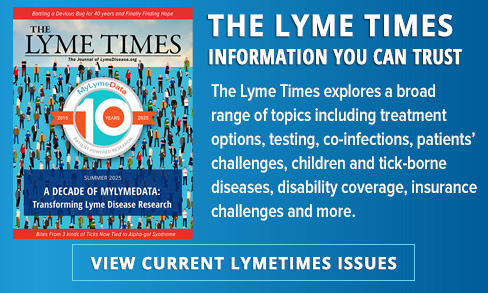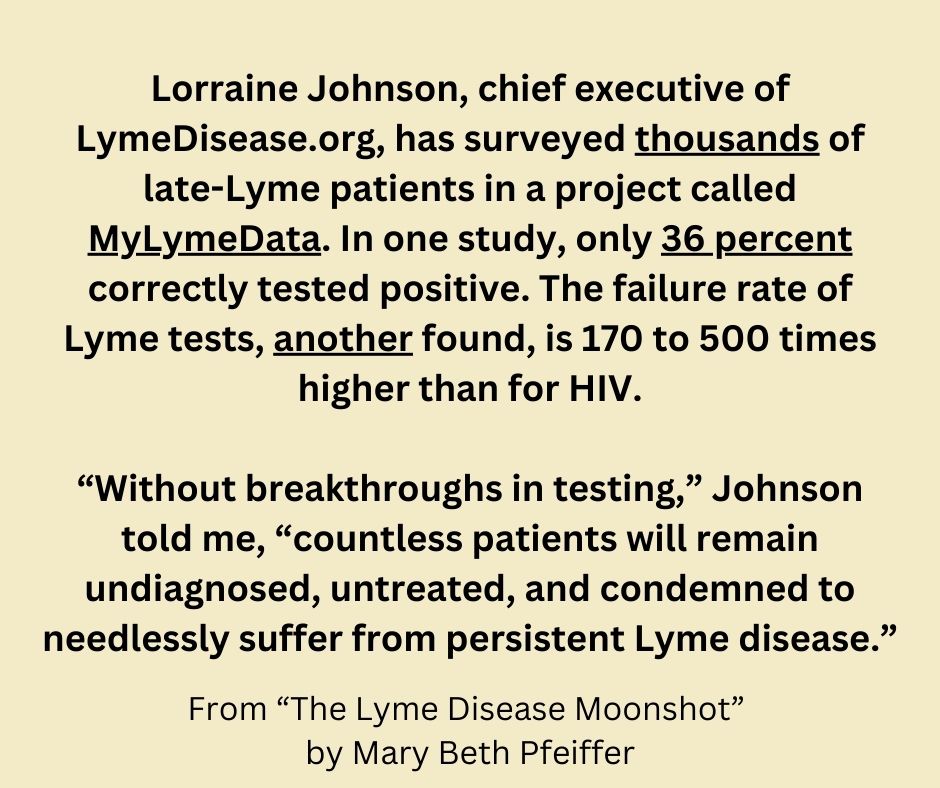How close are we to replacing the “singularly bad” Lyme test?

By Mary Beth Pfieffer
Kim Collins was a massage therapist at the peak of her talent, beauty, and ambition, when, in 2008, she got Lyme disease.
Despite antibiotic treatment, she developed brain lesions, slurred speech, vertigo, joint swelling, and debilitating pain…She ultimately had to give up massage therapy. She did not finish nursing school. Her engagement ended.
“It was a lost life,” she said.
Kim is among two million Americans who are seldom treated for—let alone cured of—their chronic Lyme disease, because no government-sanctioned test can prove it exists.
The hopeful news, a term I use with caution, is that new technologies are in development to diagnose Lyme disease in patients too long at the mercy of a singularly bad thirty-year-old test that fails both early and late in the disease.
Read the rest of this article, “The Lyme Disease Moonshot,” at either of these websites:
Mary Beth Pfeiffer is an investigative journalist and author of Lyme: The First Epidemic of Climate Change.





















We invite you to comment on our Facebook page.
Visit LymeDisease.org Facebook Page